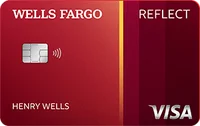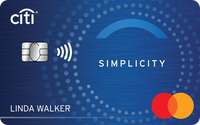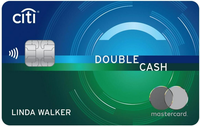Should you pay off debt with the BankAmericard?




Key takeaways
- The BankAmericard® credit card has one of the longer intro APR offers on the market for balance transfers, making it a smart choice to pay off debt.
- If you use the BankAmericard to pay off debt, be aware that the card does include a 3 percent intro balance transfer fee for transfers in the first 60 days. After that, a 4 percent fee applies.
- After the intro APR offer has expired, the card comes with few long-term benefits that make it worth keeping, but it has a low variable APR.
If you’re carrying debt, a credit card with a low introductory APR offer is a powerful strategy to it off faster without accumulating additional interest.
Should you do a BankAmericard balance transfer?
The BankAmericard® credit card* is one balance transfer option to consider if you want to limit the interest you pay for over a year. While there are many balance transfer cards available with lucrative offers, the BankAmericard has features that put it slightly ahead of other options.
0% intro APR on balance transfers
Balance transfers made in the first 60 days after opening an account qualify for a 0 percent introductory APR for 18 billing cycles. After that, a variable APR between 15.24 percent and 25.24 percent applies. This is one of the longest balance transfer offers on the market.
Balance transfer fee
The card charges a balance transfer fee of 3 percent for 60 days from account opening, then 4 percent, which is on par with most other cards’ fees. However, you should still use Bankrate’s balance transfer calculator to determine if this card — or another balance transfer card — can help you save money.
No penalty APR
The BankAmericard doesn’t charge a penalty APR, a repercussion from paying late that can indefinitely increase your APR and result in high interest charges. This can act as a safety net for cardholders still trying to find their footing when it comes to responsible card usage.
Tips for completing a Bank of America balance transfer
The process to complete a balance transfer with a Bank of America card is fairly simple. When applying for a balance transfer card from the issuer, enter the 16-digit account number on your credit card that holds the balance you’d like to transfer, along with the balance amount.
If you’ve already opened an account, look for the “Transfer Balance or Get Cash” option in your banking menu, then provide the account number of the card you’d like to transfer from, along with the amount you’d like to transfer.
If you’d prefer that someone walk you through the process, you can also complete a balance transfer over the phone. Simply call the number on the back of your Bank of America credit card.
How does the BankAmericard’s intro APR offer compare to other balance transfer cards?
There are balance transfer cards that avoid the balance transfer fee, but they don’t usually have the benefits and features you’ll find on the BankAmericard, which has one of the most impressive intro APR offers. Although it’s a solid card for a balance transfer, there are a few other no annual fee balance transfer credit cards worth considering if you’re looking to pay down debt:
| Card | 0% intro APR offer | Balance transfer fee | Rewards | Variable APR |
|---|---|---|---|---|
| BankAmericard® credit card |
18 billing cycles on purchases and on balance transfers made in the first 60 days |
A 3% intro balance transfer fee will apply for the first 60 days your account is open. After the intro balance transfer fee offer ends, the fee for future balance transfers is 4%. |
None |
15.24% - 25.24% Variable APR on purchases and balance transfers |
| Wells Fargo Reflect® Card |
21 months from account opening on purchases and qualifying balance transfers made within the first 120 days |
5% (min. $5) |
None |
17.24%, 23.74%, or 28.99% Variable APR |
| U.S. Bank Visa® Platinum Card* |
18 billing cycles on purchases and balance transfers made in the first 60 days |
3% (min. $5) |
None |
17.74% - 28.74% Variable |
| Citi® Diamond Preferred® Card* |
21 months from account opening on balance transfers made in the first four months; 12 months from account opening on purchases |
5% (min. $5) |
None |
17.24% - 27.99% (Variable) |
| Citi Simplicity® Card* |
21 months from account opening on balance transfers made in the first four months; 12 months from account opening on purchases |
3% intro fee (min. $5) |
None |
18.24% - 28.99% (Variable) |
| Citi Double Cash® Card |
18 months from account opening on balance transfers made in the first four months |
3% intro fee (min. $5); 5% (min $5) after first four months |
1% as you buy, plus another 1% when you pay for your purchases |
18.24% - 28.24% (Variable) |

Wells Fargo Reflect® Card

U.S. Bank Visa® Platinum Card

Citi® Diamond Preferred® Card

Citi Simplicity® Card

Citi Double Cash® Card
The bottom line
If you’re hoping to choose a balance transfer credit card to start managing your debt, the BankAmericard is a fantastic option. While it doesn’t earn rewards and doesn’t come with many bells and whistles, an intro APR offer on purchases and qualifying balance transfers is certainly a fair trade if you’re managing debt. Plus, there are a handful of helpful BankAmericard benefits.
After the introductory APR offer has expired, however, this card has little to offer, unlike some other Bank of America credit cards. However, it does have a low ongoing variable APR, so it’s worth considering if you’re looking to reduce interest charges beyond your intro period.
The BankAmericard® credit card details were last updated on January 22, 2025.
*Information about the BankAmericard® credit card, Citi® Diamond Preferred® Card, Citi Simplicity® Card and U.S. Bank Visa® Platinum Card has been collected independently by Bankrate and has not been reviewed or approved by the issuer.
Why we ask for feedback Your feedback helps us improve our content and services. It takes less than a minute to complete.
Your responses are anonymous and will only be used for improving our website.
You may also like

Does APR matter if you pay your credit card off on time?

What’s a good APR for a credit card?



